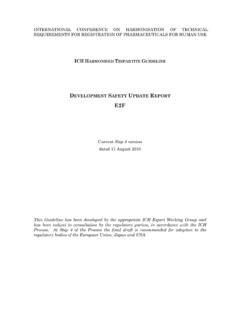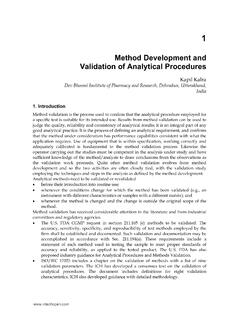Transcription of ICH HARMONISED GUIDELINE
1 INTERNATIONAL COUNCIL FOR HARMONISATION OF TECHNICAL REQUIREMENTS FOR PHARMACEUTICALS FOR HUMAN USE ICH HARMONISED GUIDELINE bioanalytical method validation M10 Draft version Endorsed on 26 February 2019 Currently under public consultation At Step 2 of the ICH Process, a consensus draft text or GUIDELINE , agreed by the appropriate ICH Expert Working Group, is transmitted by the ICH Assembly to the regulatory authorities of the ICH regions for internal and external consultation, according to national or regional procedures. M10 Document History Code History Date M10 Endorsement by the Members of the ICH Assembly under Step 2 and release for public consultation (document dated 15/01/2019).
2 26/02/2019 Legal notice: This document is protected by copyright and may, with the exception of the ICH logo, be used, reproduced, incorporated into other works, adapted, modified, translated or distributed under a public license provided that ICH's copyright in the document is acknowledged at all times. In case of any adaption, modification or translation of the document, reasonable steps must be taken to clearly label, demarcate or otherwise identify that changes were made to or based on the original document. Any impression that the adaption, modification or translation of the original document is endorsed or sponsored by the ICH must be avoided.
3 The document is provided "as is" without warranty of any kind. In no event shall the ICH or the authors of the original document be liable for any claim, damages or other liability arising from the use of the document. The above-mentioned permissions do not apply to content supplied by third parties. Therefore, for documents where the copyright vests in a third party, permission for reproduction must be obtained from this copyright holder. 1 ICH HARMONISED GUIDELINE 1 bioanalytical method validation 2 M10 3 ICH Consensus GUIDELINE 4 TABLE OF CONTENTS 5 1. INTRODUCTION .. 4 6 Objective .. 4 7 Background.
4 4 8 Scope .. 4 9 2. GENERAL PRINCIPLES .. 5 10 Method Development .. 5 11 method validation .. 6 12 Full validation .. 6 13 Partial validation .. 7 14 Cross validation .. 7 15 3. CHROMATOGRAPHY .. 7 16 Reference Standards .. 7 17 8 18 Selectivity .. 8 19 Specificity .. 9 20 Matrix Effect .. 10 21 Calibration Curve and Range .. 10 22 Accuracy and Precision ..11 23 Preparation of Quality Control Samples ..11 24 Evaluation of Accuracy and Precision .. 12 25 Carry-over .. 12 26 Dilution Integrity .. 13 27 ICH M10 GUIDELINE 2 Stability .. 13 28 Reinjection Reproducibility .. 16 29 Study Sample Analysis.
5 16 30 Analytical Run .. 16 31 Acceptance Criteria for an Analytical Run .. 17 32 Calibration Range .. 18 33 Reanalysis of Study Samples .. 19 34 Reinjection of Study Samples .. 20 35 Integration of Chromatograms .. 20 36 4. LIGAND BINDING ASSAYS .. 21 37 Key Reagents .. 21 38 Reference 21 39 Critical Reagents .. 21 40 22 41 Specificity .. 22 42 Selectivity .. 23 43 Calibration Curve and Range .. 23 44 Accuracy and Precision .. 24 45 Preparation of Quality Control Samples .. 24 46 Evaluation of Accuracy and Precision .. 25 47 Carry-over .. 25 48 Dilution Linearity and Hook Effect .. 25 49 Stability.
6 26 50 Study Sample Analysis .. 27 51 Analytical Run .. 27 52 Acceptance Criteria for an Analytical Run .. 28 53 Calibration Range .. 29 54 Reanalysis of Study Samples .. 29 55 56 ICH M10 GUIDELINE 3 5. INCURRED SAMPLE REANALYSIS .. 30 57 6. PARTIAL AND CROSS validation .. 32 58 Partial validation .. 32 59 Cross validation .. 33 60 7. ADDITIONAL CONSIDERATIONS .. 34 61 Analytes that are also Endogenous Compounds .. 34 62 Quality Control Samples .. 35 63 Calibration Standards .. 36 64 Selectivity, Recovery and Matrix Effects .. 36 65 Parallelism .. 37 66 Accuracy and Precision .. 37 67 Stability.
7 37 68 Parallelism .. 37 69 Recovery .. 38 70 Minimum Required Dilution .. 38 71 Commercial and Diagnostic Kits .. 38 72 New or Alternative Technologies .. 39 73 Dried Matrix methods .. 40 74 8. DOCUMENTATION .. 40 75 Summary Information .. 41 76 Documentation for validation and bioanalytical Reports .. 42 77 9. GLOSSARY .. 50 78 79 80 ICH M10 GUIDELINE 4 1. INTRODUCTION 81 Objective 82 This GUIDELINE is intended to provide recommendations for the validation of bioanalytical assays 83 for chemical and biological drug quantification and their application in the analysis of study 84 samples.
8 Adherence to the principles presented in this GUIDELINE will improve the quality and 85 consistency of the bioanalytical data in support of the development and market approval of both 86 chemical and biological drugs. 87 The objective of the validation of a bioanalytical assay is to demonstrate that it is suitable for 88 its intended purpose. Changes from the recommendations in this GUIDELINE may be acceptable 89 if appropriate scientific justification is provided. Applicants are encouraged to consult the 90 regulatory authority(ies) regarding significant changes in method validation approaches when 91 an alternate approach is proposed or taken.
9 92 Background 93 Concentration measurements of chemical and biological drug(s) and their metabolite(s) in 94 biological matrices are an important aspect of drug development. The results of pivotal 95 nonclinical toxicokinetic (TK)/pharmacokinetic (PK) studies and of clinical trials, including 96 comparative bioavailability/bioequivalence (BA/BE) studies, are used to make regulatory 97 decisions regarding the safety and efficacy of drug products. It is therefore critical that the 98 bioanalytical methods used are well characterised, appropriately validated and documented in 99 order to ensure reliable data to support regulatory decisions.
10 100 Scope 101 This GUIDELINE describes the method validation that is expected for bioanalytical assays that are 102 submitted to support regulatory submissions. The GUIDELINE is applicable to the validation of 103 bioanalytical methods used to measure concentrations of chemical and biological drug(s) and 104 their metabolite(s) in biological samples ( , blood, plasma, serum, other body fluids or 105 tissues) obtained in pivotal nonclinical TK/PK studies that are used to make regulatory 106 decisions and all phases of clinical trials in regulatory submissions. Full method validation is 107 expected for the primary matrix(ces) intended to support regulatory submissions.
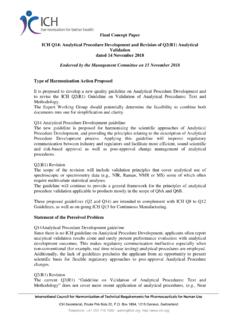
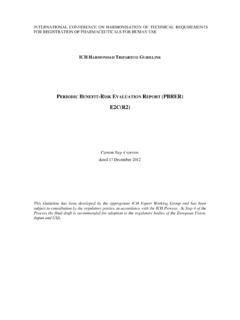
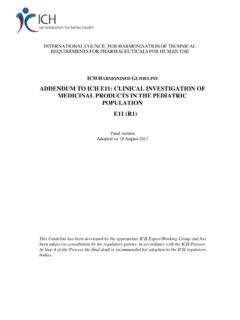
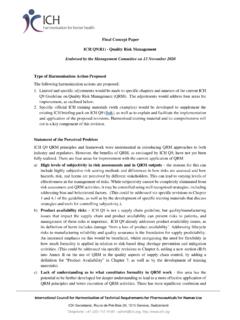
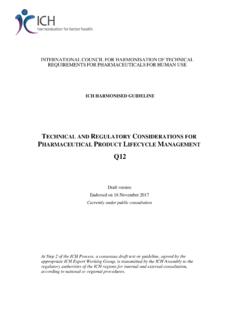
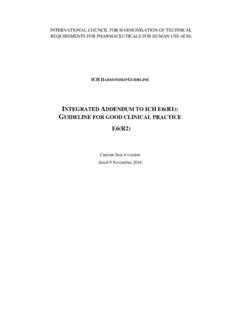
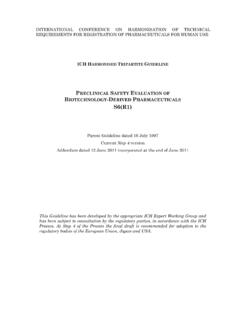
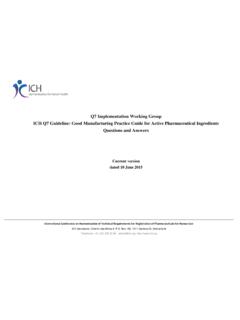
![[ICH E2F] [EXAMPLE DSUR – PHASE III INVESTIGATIONAL …](/cache/preview/e/7/a/2/e/6/3/0/thumb-e7a2e63043c4463724e748eb98faa3a7.jpg)
